#Interactive Web Design
Explore tagged Tumblr posts
Text
How to design Interactive Web Design in best price?
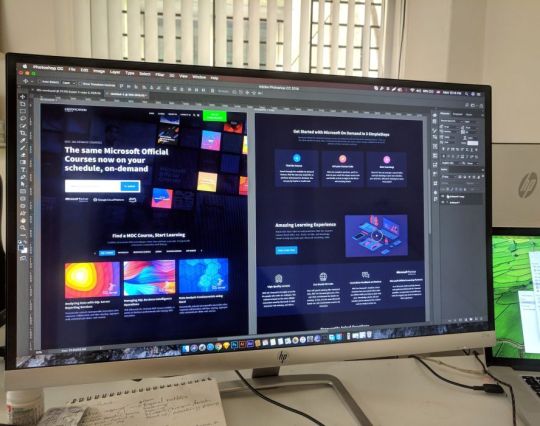
Designing an interactive web design on a budget requires careful planning, creativity, and efficient use of resources. In this guide, I'll provide you with a step-by-step approach to creating an engaging and interactive web design within the best price constraints.
Interactive web design is a powerful tool for creating memorable and effective online experiences that benefit both users and businesses alike. As technology continues to evolve, web designers must keep innovating and adapting interactive elements to cater to the ever-changing expectations of users.
Set Clear Goals and Scope
Before starting any project, define your goals and project scope. Understand the purpose of the Interactive Websites, its target audience, and the specific Interactive Websites elements you want to include. Having a clear vision will help you stay focused and avoid unnecessary expenses.
Choose the Right Platform and Tools
Select a web development platform that aligns with your budget and requirements. Popular cost-effective options include WordPress, Joomla, or using a website builder like Wix or Squarespace. These platforms often come with built-in interactive features and templates that can save you time and money. Utilize free or affordable design tools like Canva or GIMP for graphics and image editing.
Responsive Design
Ensure your web design is responsive, meaning it adapts to different screen sizes and devices. Responsive Interactive Websites design eliminates the need for separate mobile versions, reducing development costs.
Minimalistic Design Approach
Embrace a minimalistic design approach that focuses on simplicity and clean aesthetics. Fewer design elements mean less time spent on development and lower costs. Use negative space effectively and choose a cohesive color palette to create an elegant yet cost-efficient design.
Open-Source Templates and Themes
Explore free and open-source website templates and themes available online. Platforms like WordPress offer a wide range of themes with Interactive Websites elements that can be customized to suit your needs, saving you both time and money.
DIY vs. Hiring Professionals
Assess your skills and expertise in Interactive Websites and development. If you have the required knowledge, consider doing some parts of the design yourself. For complex interactive features, like animations or custom coding, it may be worth hiring freelancers or a web development agency. Compare prices and portfolios to find the best fit for your budget.
Optimize for Performance
Performance optimization is crucial for user experience and search engine rankings. Compress images, minify CSS and JavaScript, and enable caching to reduce loading times. Faster-loading pages often lead to higher engagement and conversion rates with your Interactive Websites.
User-First Approach
Place user experience at the forefront of your design. Ensure that Interactive Websites elements enhance usability and engagement, rather than complicating the navigation. Conduct user testing and gather feedback to refine your design iteratively.
Integrate Social Media
Use social media integrations to increase user engagement and expand your online presence. Social media plugins and sharing buttons can be easily added to your Interactive Websites for little to no cost.
Educational Content and Tutorials
Create educational content and Interactive Websites tutorials that provide value to your audience. Informative videos, infographics, and interactive guides can be cost-effective ways to engage users and establish your expertise.
Continuous Maintenance and Updates
Regularly update and maintain your website to ensure it stays relevant and functional. Promptly fix any bugs or issues that arise to avoid costly repairs in the future.
Therefore creating an interactive web design on a budget requires smart decision-making and resourceful use of available tools and platforms. By following these guidelines and maintaining a user-centric approach, you can design an engaging website without breaking the bank. Remember to regularly evaluate the performance and user feedback to make improvements over time.
Interactive Web Design
Interactive web design refers to the process of creating web pages or applications that engage users and allow them to interact with the content and functionality. The primary goal of interactive web design is to enhance user experience, encourage user participation, and make the website or web application more enjoyable and effective.
Key Elements of Interactive Web Design:
User Interface (UI): The UI is the visual and Interactive Websites elements of the website that users interact with, such as buttons, menus, forms, and navigation. A well-designed UI makes it easy for users to understand and use the website's features.
User Experience (UX): UX focuses on creating a positive and seamless experience for users while they interact with the website. This involves considering user needs, preferences, and behaviors to design intuitive and efficient interactions.
Animation and Transitions: Adding subtle animations and transitions to elements can make the website feel more dynamic and responsive. However, it's essential not to overdo it, as excessive animation can lead to a cluttered and distracting experience.
Responsiveness: Interactive web design should adapt to different devices and screen sizes. This means the website should be mobile-friendly and work well on various devices, including smartphones, tablets, and desktop computers.
Feedback and Validation: Providing real-time feedback to users when they interact with elements like forms or buttons helps them understand their actions and prevents errors. Validation messages for form inputs are crucial to guide users and reduce frustration.
Microinteractions: These are small, subtle interactions that serve a specific purpose, such as liking a post, clicking a button, or expanding a menu. Microinteractions add a sense of delight and engagement to the user experience.
Scroll and Parallax Effects: Scrolling can be used creatively to enhance storytelling or to trigger animations and effects as users move down the page. Parallax effects, where background elements move at a different speed than foreground elements, can create a sense of depth and immersion.
Gamification: Incorporating game-like elements, such as points, badges, or progress bars, can make the website more fun and encourage users to explore and engage with the content.
Multimedia Elements: Using images, videos, audio, and interactive elements like sliders and carousels can make the website more engaging and visually appealing.
Personalization: Tailoring the user experience based on individual preferences and behavior can make the website feel more relevant and user-centric.
Remember that interactive web design should not sacrifice usability and accessibility for the sake of novelty. The goal is to strike a balance between creativity and user-friendliness, ensuring that all visitors can easily interact with and enjoy the website.
Interactive web design is a powerful and essential approach to creating engaging and user-friendly websites. By incorporating interactive elements, such as animations, hover effects, interactive forms, and dynamic content, web designers can enhance the user experience and encourage visitors to stay longer on the site.
One of the key benefits of interactive web design is its ability to create a more memorable and enjoyable browsing experience. Users are more likely to connect with a website that responds to their actions and provides instant feedback. This increased engagement can lead to higher user retention, increased conversions, and improved brand perception.
Furthermore, interactive web design plays a crucial role in keeping up with the ever-evolving digital landscape. As technology advances and user expectations grow, static and traditional web designs may fall short in delivering the desired user experience. By embracing interactive design principles, websites can adapt to various devices and cater to different user preferences, ensuring they remain relevant and competitive in the online space.
Additionally, interactive web design fosters better communication and interaction between businesses and their customers. Through interactive elements like chatbots, feedback forms, and interactive product showcases, companies can gather valuable insights, understand their audience better, and provide personalized solutions to their users' needs.
However, while interactive web design can be highly beneficial, it should be approached with care. Overloading a website with unnecessary animations or complex interactions can lead to slow loading times and a cluttered user interface, which can be counterproductive and frustrating for users. Thus, striking the right balance between functionality, aesthetics, and user-friendliness is crucial.
Interactive web design is a vital component of modern web development that can significantly impact user engagement, brand perception, and business success. By creating dynamic, user-centric, and visually appealing experiences, web designers can elevate their websites and ensure they stay ahead in an increasingly competitive digital world.
2 notes
·
View notes
Text
The Future of Interactive Web Design: Trends to Watch in 2025

In today's digital landscape, a website isn't just a digital brochure anymore—it's a dynamic experience that connects brands with their audience. As we move further into 2025, interactive web design continues to evolve at a breathtaking pace, transforming how we interact with online content.
Let's explore the cutting-edge trends that are reshaping the world of interactive website design and discover what the future holds for businesses and users alike.
Voice User Interfaces Are Taking Center Stage
Remember when typing was the only way to interact with websites? Those days are Fquickly fading. Voice-controlled interfaces are becoming increasingly sophisticated in 2025, allowing users to navigate websites, make purchases, and interact with content using natural speech patterns.
This shift is particularly beneficial for accessibility, enabling people with mobility limitations to browse the web more easily. Businesses incorporating voice interactions into their interactive web design are seeing higher engagement rates and broader audience reach.
If you're considering upgrading your digital presence, professional web design services can help integrate voice capabilities that feel natural rather than robotic.
Immersive 3D Experiences
The line between digital and physical continues to blur with the rise of immersive 3D experiences. In 2025, websites are no longer flat, two-dimensional spaces—they're becoming virtual environments that users can explore.
From virtual showrooms for retail to interactive product demonstrations, 3D elements are transforming how businesses showcase their offerings. Users can now view products from every angle, customize features in real-time, and even place virtual items in their own spaces before making purchase decisions.
What makes this trend so powerful is its ability to create memorable experiences. When visitors can interact with your content in three dimensions, they're more likely to remember your brand and return to your site.
Micro-interactions That Delight
Sometimes, it's the small things that make the biggest impact. Micro-interactions—those tiny animations and feedback elements that respond to user actions—are becoming more sophisticated and purposeful in interactive website design.
From buttons that provide subtle feedback when clicked to loading animations that entertain rather than frustrate, these small details add up to create a more engaging user experience. They guide users through their journey on your site, provide confirmation that their actions have been registered, and inject personality into your digital presence.
Working with experienced web design services can help ensure these micro-interactions enhance rather than distract from your content.
AI-Powered Personalization Goes Deeper
We've been talking about personalization for years, but in 2025, AI-driven personalization has reached new heights in interactive web design. Today's systems don't just remember your name—they learn from your behavior patterns to create entirely customized experiences.
From dynamically changing navigation based on user preferences to content that adapts to individual interests, websites are becoming more like conversations than monologues. This hyper-personalization creates stronger connections with users, who feel understood and valued rather than treated as anonymous visitors.
The most successful websites are those that strike the perfect balance between personalization and privacy, using data ethically to enhance the user experience without crossing into uncomfortable territory.
Horizontal Scrolling Reimagined
While vertical scrolling has been the standard for decades, horizontal scrolling is making a comeback in interactive website design—but with significant improvements. Unlike the clunky horizontal experiences of the past, today's horizontal scrolling is intuitive, smooth, and purposeful.
This approach allows for creative storytelling and guided journeys through content. It's particularly effective for portfolios, product showcases, and narrative-driven sites where the designer wants to control the flow of information.
When implemented thoughtfully, horizontal scrolling can create a unique and memorable browsing experience that sets your site apart from competitors.
Augmented Reality Integration
Augmented reality (AR) has moved beyond gaming and entertainment to become a practical tool for interactive web design. In 2025, users can try on virtual clothing, visualize furniture in their homes, or test cosmetics—all through their web browsers.
This technology bridges the gap between online shopping and in-store experiences, giving users the confidence to make purchases without seeing products in person. AR features can significantly reduce return rates and increase customer satisfaction when implemented correctly.
As browsers and devices continue to improve their AR capabilities, we're seeing more businesses incorporate this technology into their websites with the help of specialized web design services.
Accessibility as a Priority, Not an Afterthought
Perhaps the most important trend in interactive website design isn't flashy or immediately visible—it's the growing commitment to accessibility. In 2025, designing for all users, regardless of ability, is becoming standard practice rather than a nice-to-have addition.
This includes considerations like keyboard navigation, screen reader compatibility, color contrast ratios, and alternative text for images. These elements ensure that interactive web experiences are available to everyone, expanding your potential audience and demonstrating social responsibility.
The most forward-thinking companies are embracing inclusive design principles from the start of their projects, rather than retrofitting accessibility features later.
Conclusion
As we navigate through 2025, interactive web design continues to evolve in exciting ways. The trends we're seeing focus not just on visual appeal, but on creating meaningful, accessible, and personalized experiences for users.
Whether you're looking to refresh your existing site or build something entirely new, keeping these trends in mind will help you create a digital presence that feels current and engaging. Remember, the most successful interactive website design balances innovation with usability, pushing boundaries without sacrificing the core function of helping users achieve their goals.
By partnering with experienced web design services, you can navigate these trends and implement them in ways that enhance rather than overwhelm your website visitors. The future of web design is interactive, immersive, and inclusive—and it's happening right now.
0 notes
Text

How Interactive Web Design Can Improve User Experience and Retention
0 notes
Text

Do you need a website?
just CLICK HERE and build your own website by your choice.
https://go.fiverr.com/visit/?bta=1026601&brand=fiverrmarketplace&landingPage=https%253A%252F%252Fwww.fiverr.com%252Fs%252FKe716Q4
#Website Design#Web Development#Responsive Web Design#UI/UX Design#Web Design Trends#Custom Web Design#Web Development Services#Front-End Development#Back-End Development#Full-Stack Development#WordPress Design#E-commerce Web Design#Website Redesign#Mobile Web Design#Web Design Inspiration#Website Optimization#SEO Web Design#Web Design Best Practices#Website User Experience#Web Design Principles#Graphic Design for Websites#Website Development Tools#Content Management Systems#Website Speed Optimization#HTML/CSS Design#JavaScript Development#Website Accessibility#Interactive Web Design#Website Prototyping#Web Design Software
0 notes
Text
#Top Web Design Companies India#Digital Innovation#Future of Web Design#Best Hiring Companies India#Interactive Web Design
0 notes
Text
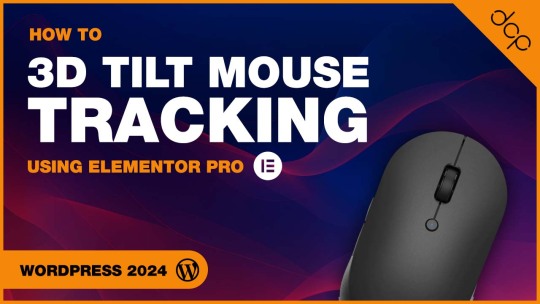
Video Tutorial Link: https://youtu.be/DfXMNnrWkYk
Dive into the world of interactive web design with our detailed tutorial on "Master 3D Tilt Mouse Tracking with Elementor Pro: A Step-by-Step Guide!" This video is your ultimate roadmap to enhancing user engagement and bringing a dynamic layer to your website's visuals using the powerful features of Elementor Pro.
Useful Links Elementor Pro - https://www.dcpweb.co.uk/go/elementor Essential Addons - https://www.dcpweb.co.uk/go/essential-addons-elementor Siteground WordPress Hosting - https://www.dcpweb.co.uk/go/siteground
Subscribe for free access to 800+ Video Tutorials: https://www.youtube.com/dcpwebdesigners
Contact me at:
Instagram: https://www.instagram.com/dcpwebdesigners/ Facebook: https://www.facebook.com/dcpwebdesigners/ Pinterest: https://www.pinterest.co.uk/dcpwebdesigners/ LinkedIn: https://www.linkedin.com/in/dcpwebdesigners/ Website:: https://www.dcpweb.co.uk
Table of contents
00:00:00 Introduction 00:01:20 Select an object to apply 3D mouse tilt in Elementor Pro 00:01:40 Select the "Advanced" tab and then the submenu "Motion Effects" 00:01:50 Enable "Mouse Effects" and apply the 3D tilt effect 00:03:20 Apply 3D tilt effect to button 00:04:10 Apply 3D tilt effect to text content 00:04:50 Example Elementor 3D tilt website usage
ElementorPro #Tutorial
In this comprehensive guide, we'll walk you through the process of implementing 3D tilt effects on your website elements, responsive to mouse movements. Whether you're a web design enthusiast, a professional looking to elevate your portfolio, or a business owner aiming to captivate your audience, this tutorial is designed with you in mind.
We'll start by introducing you to the basics of Elementor Pro, focusing on its unique features that make such effects possible. Then, we'll dive into a hands-on demonstration where we'll apply the 3D tilt mouse tracking effect step by step. You'll learn how to select the right elements for the effect, adjust the depth and movement sensitivity, and customise the animation to fit the style and theme of your website.
Not only will you see the immediate transformation of your website elements, but we'll also share best practices for user experience, ensuring your site remains accessible and enjoyable for all visitors. Throughout the tutorial, we'll provide pro tips to help you troubleshoot common challenges and optimise your design for all devices.
By the end of this video, you'll have the skills and confidence to implement stunning 3D tilt effects, making your website stand out from the crowd. Remember, interactive web design is not just about aesthetics; it's about creating immersive experiences that engage and retain your audience.
So, grab your mouse, open up Elementor Pro, and let's start crafting a website that comes to life with every move. Don't forget to like, share, and subscribe for more insightful tutorials on taking your web design skills to the next level!
Elementor Pro Tutorial, 3D Tilt Mouse Tracking, Interactive Web Design, Elementor Pro Tips, Advanced Elementor Techniques, Web Design Tutorials, Elementor Pro Mouse Effects, Custom Web Effects, Step-by-Step Elementor Guide, Elementor Animation Effects, User Experience Design, Elementor 3D Effects, Dynamic Web Content, Elementor Pro Design, Website Enhancement with Elementor
#Elementor Pro Tutorial#Interactive Web Design#Elementor Pro Tips#dcpweb#dcpwebdesigners#Elementor Animation Effects
0 notes
Text
The Role of Web Design and Development in Building a Strong Online Presence
Introduction
In the digital era, the significance of web design and development in establishing a robust online presence cannot be overstated. This article delves into the intricacies of this vital process, shedding light on its multifaceted aspects and how it impacts businesses and individuals alike.
Exploring the Foundations
Crafting an Engaging Website
Creating a captivating online space is the cornerstone of successful web design and development. Your website is the virtual storefront, and a well-designed, user-friendly interface is the key to attracting and retaining visitors. From intuitive navigation to visually appealing layouts, every detail matters.
The Role of Web Design and Development in Building a Strong Online Presence revolves around ensuring that your website becomes a digital haven, effortlessly drawing in your target audience.
Optimizing User Experience (UX)
User experience is paramount in the online realm. Dive into the nuances of enhancing UX through seamless navigation, responsive design, and strategic content placement. Elevate your website's appeal, making it not just a destination but an experience that users remember and revisit.
Navigating the Digital Landscape
Mobile Responsiveness Matters
In an era dominated by smartphones, a mobile-responsive design is non-negotiable. Learn why catering to the mobile audience is critical and how it directly impacts your online presence. Google's algorithms prioritize mobile-friendly websites, making this a pivotal aspect of web development.
Harnessing the Power of SEO
Uncover the symbiotic relationship between web design, development, and Search Engine Optimization (SEO). From meta tags to keyword-rich content, explore the strategies that propel your website to the top of search engine results. An SEO-optimized site is your ticket to enhanced visibility and credibility.
Building Trust and Authority
Creating Credible Content
Content is king, and its role in shaping your online presence cannot be ignored. Understand the art of creating engaging, informative, and shareable content that resonates with your audience. From blog posts to multimedia content, leverage the diverse tools in your content creation arsenal.
Security Measures for Trustworthiness
Trust forms the bedrock of any online relationship. Delve into the security measures integral to web development, assuring your audience that their data is safe. Explore the HTTPS protocol, secure payment gateways, and other trust-building elements crucial for a strong online presence.
The Role of Web Design and Development in Building a Strong Online Presence
Unveil the heart of the matter as we explore how the synergy between web design and development creates an indelible mark on your digital footprint. From captivating aesthetics to seamless functionality, witness the transformative power of these elements.
FAQs
How does web design impact user engagement? A visually appealing and user-friendly design captivates visitors, encouraging prolonged engagement and fostering a positive perception of your brand.
Why is mobile responsiveness crucial for online success? Mobile responsiveness ensures your website adapts to various devices, providing a consistent and enjoyable user experience, while also improving SEO rankings.
What role does content play in online presence? Quality content establishes your expertise, engages your audience, and contributes significantly to search engine rankings, enhancing your online visibility.
How can security measures boost online trust? Implementing robust security measures, such as HTTPS and secure payment gateways, instills confidence in users, assuring them of the safety of their interactions with your website.
Is SEO only about keywords? While keywords are vital, SEO encompasses various strategies like meta tags, quality backlinks, and mobile optimization, collectively influencing your online presence.
Why is user experience (UX) pivotal in web design? A positive UX ensures visitors can navigate your site seamlessly, leading to higher satisfaction, longer dwell times, and increased chances of conversion.
Conclusion
In conclusion, The Role of Web Design and Development in Building a Strong Online Presence is an intricate dance between aesthetics, functionality, and user experience. Mastering these elements propels your digital presence to new heights, ensuring your brand or persona stands out in the crowded online landscape.
#Responsive Design#User Experience#Front-end Development#Back-end Development#UI/UX Design#Mobile Optimization#Graphic Design#HTML5#CSS3#JavaScript#Interactive Web Design#Mobile App Development
1 note
·
View note
Text
0 notes
Text
obscured morality - ch 8 pt 35


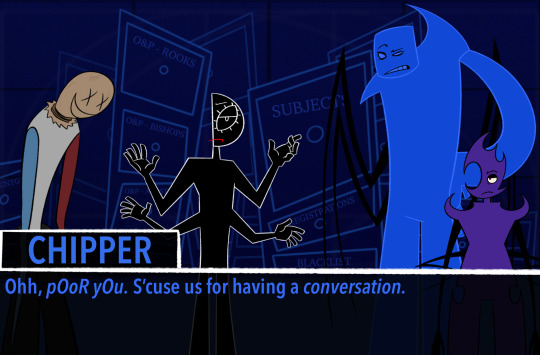



send an ask to interact!
#interactive blog#original comic#original story#oc#oc art#obscured morality#original character#web comic#original art#orignal character#orignal art#original series#writers on tumblr#artists on tumblr#ocs#my ocs#small artist#character art#digital artist#digital art#art#webcomic#explore#comics#digital drawing#drawing#web series#storytelling#character design
13 notes
·
View notes
Text
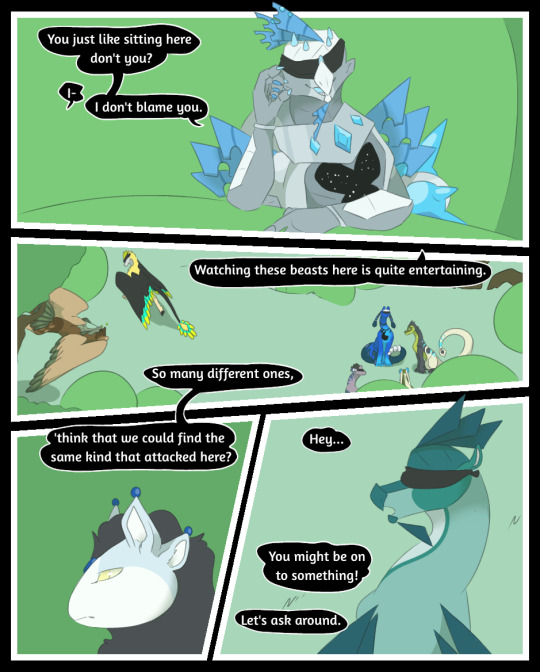
< | >
#evolxe gda#dragons#askblog#digital art#oc#web comic#fantasy novel#webseries#open species#dragon species#original species#dragon comic#creature#creature design#interactive species#original character#oc lore#world building#closed species#cs#interactive comic#choose your own adventure#zevolx#feywing griphs#feywing#fllurrie#sieane
8 notes
·
View notes
Text
Mask of Humanity Religion / Consumerism Male / Female Material / Spirituality Oriental Zen / Western Minimalism
2 notes
·
View notes
Text
LIFT YOUR HEAD UP HIGH! FT. WARHEAD (YAYYY ANIMATION)
check out @obscured-morality for the webcomic!
#artists on tumblr#character art#original art#small artist#character design#oc#oc art#oc artist#original character#original story#art#explore#comic#web comic#interactive blog
6 notes
·
View notes
Text
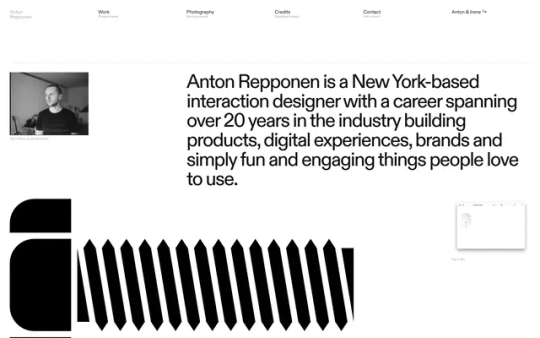
Anton Repponen
#Anton Repponen#interaction#designer#design#studio#New-York#portfolio#white#typography#type#typeface#font#ABC Diatype#2024#Week 02#website#web design#inspire#inspiration#happywebdesign
12 notes
·
View notes
Text
Create Stunning Sliders Without Coding
Transform your website with Slider Revolution! This powerful WordPress plugin lets you create stunning sliders, carousels, and dynamic hero sections—all without coding. Choose from 250+ templates and easily customize them with a drag-and-drop editor.
In the fast-paced digital world, your website’s visual appeal plays a crucial role in engaging visitors and boosting conversions. Slider Revolution is the most advanced WordPress plugin. It empowers you to design responsive sliders, carousels, and hero sections. You can even create full one-page websites without writing a single line of code. With its intuitive drag-and-drop interface, even…
#Digital Marketing#Drag-and-Drop Editor#Dynamic Content#Interactive Sliders#Responsive Design#SEO Optimization#Slider Revolution#User Engagement#Web Design Tools#Web Development#Website Design#WordPress Plugin
2 notes
·
View notes
Text
UI Designer: Focuses on the visual elements of a product, creating user interfaces that are aesthetically pleasing and intuitive. They work with color schemes, typography, and layout to enhance usability and engagement.
UX Designer: Concentrates on the overall user experience, conducting research to understand user needs and behaviors. They design the flow of a product, ensuring it’s user-friendly and meets the target audience's expectations.
Graphic Designer: Creates visual content for various mediums, including print and digital. They use typography, imagery, and color to communicate messages, build brand identity, and engage audiences.
#quote of the day#ui#ux#user interface#user experience#UX Designer#UI Designer#graphic designer#graphic design#typography#web designer#digital#creative#ideas#product#print#book#mobile#app#web design#visual design#technology#interactive#motion graphics#commercial art#advertising#advertisements#marketing#branding#identity
3 notes
·
View notes
Text
Dive into the world where human intuition seamlessly integrates with AI brilliance in web development. Elevate your online presence with the perfect fusion of creativity and technology.
#Benefits of incorporating human touch in AI-driven web development#Enhancing user experience through human-centered AI web development#Balancing automation and human input in modern web development#The role of empathy in AI-driven web design and development#Strategies for infusing creativity into AI-powered web development#Understanding user behavior for personalized AI web development#Building trust through human-like interactions in AI web development#Improving accessibility with human-centric AI web design#Ethical considerations in integrating human touch with AI in web development#Tailoring AI algorithms for diverse user experiences in web development
5 notes
·
View notes